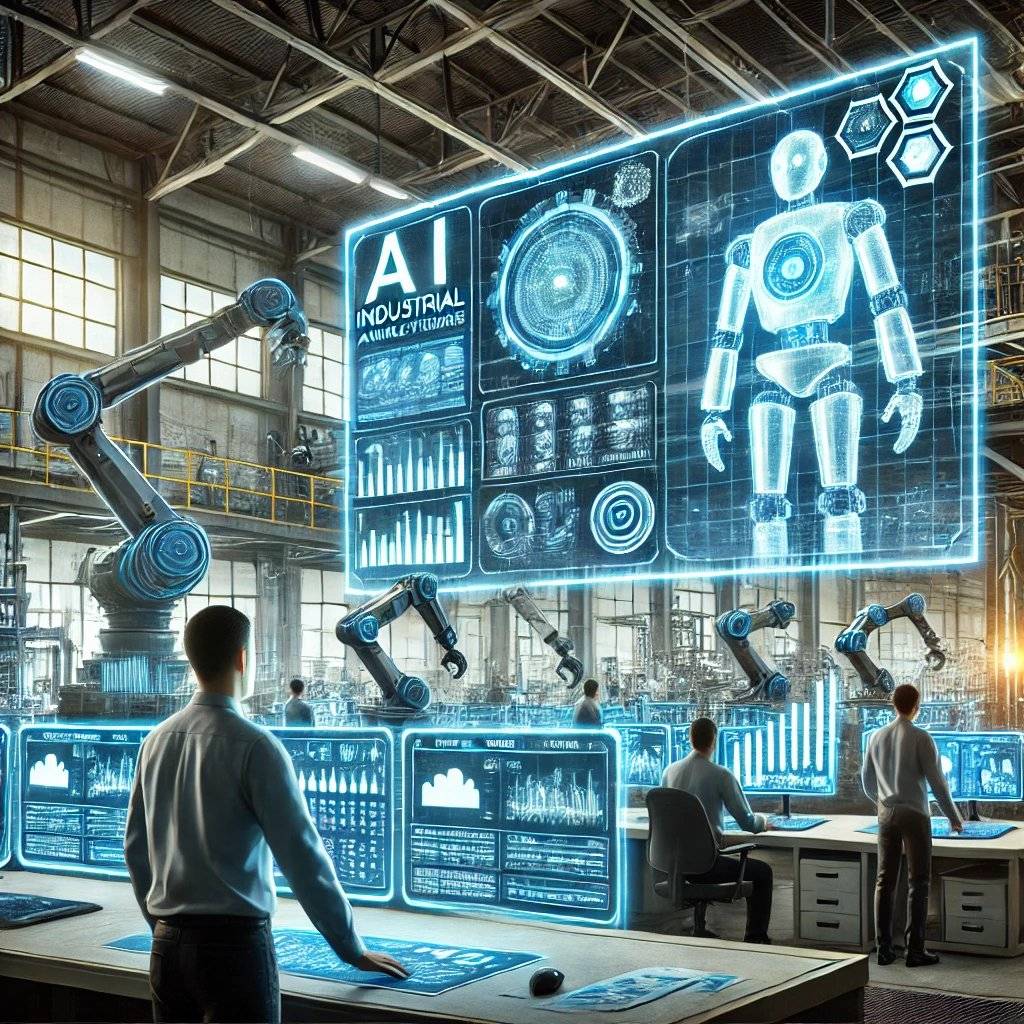Introduction: A New Era of Manufacturing
The manufacturing industry is undergoing a technological revolution. What was once dominated by manual labor and mechanical machines is now being transformed by Artificial Intelligence (AI), automation, and the Internet of Things (IoT). Smart factories—also known as Industry 4.0—are reshaping how products are made, improving efficiency, reducing costs, and increasing productivity.
These high-tech factories use advanced robotics, machine learning, and real-time data analytics to optimize production. But what does this mean for businesses, workers, and the future of industry? Will human labor become obsolete? Or will automation create new opportunities for innovation and growth?
In this article, we’ll explore how AI and automation are revolutionizing modern factories, the benefits and challenges of smart manufacturing, and what the future holds for this industry.
---
What Are Smart Factories?
A smart factory is a highly digitized and connected manufacturing facility that relies on AI, IoT, cloud computing, and automation to optimize production processes. Unlike traditional factories, where human intervention is necessary for most operations, smart factories can self-adjust, detect inefficiencies, and even predict system failures before they happen.
Key Technologies Powering Smart Factories
✅ Artificial Intelligence (AI): AI-powered systems analyze massive amounts of data in real time, optimizing production and minimizing errors.
✅ Internet of Things (IoT): Machines and devices communicate with each other through smart sensors, enabling seamless automation.
✅ Robotic Process Automation (RPA): Advanced robots handle repetitive tasks, reducing labor costs and increasing efficiency.
✅ Digital Twins: Virtual models of production systems help factories simulate and optimize operations before implementing them in the real world.
✅ Big Data Analytics: Data-driven insights allow companies to make informed decisions, predict demand, and prevent equipment failures.
---
How AI & Robotics Are Transforming Manufacturing
One of the biggest changes in the industry is the use of AI-powered robots. Unlike traditional industrial robots that follow pre-programmed instructions, AI-driven robots can learn, adapt, and improve over time.
Real-World Examples
✅ Tesla’s Gigafactories: Tesla’s factories are among the most advanced in the world, using AI-driven robots and automated processes to build electric cars with extreme precision.
✅ Amazon’s Fulfillment Centers: Amazon uses robotic automation to sort, pack, and transport products, increasing delivery speed and efficiency.
✅ Siemens’ Digital Factory: Siemens has implemented self-learning AI systems that optimize production lines without human intervention.
---
Benefits of Automation in Manufacturing
The adoption of AI and automation in smart factories brings numerous benefits to businesses and consumers alike.
1. Increased Efficiency & Speed
Machines powered by AI can work 24/7 without breaks, leading to higher productivity and faster production cycles. Unlike human workers, they do not suffer from fatigue, reducing downtime.
2. Cost Reduction
Automated systems reduce labor costs and minimize material waste. Smart sensors detect inefficiencies in real time, helping companies save money.
3. Improved Product Quality
AI-powered quality control systems detect defects in real time, ensuring that only high-quality products reach the market.
4. Predictive Maintenance
IoT-enabled machines can predict failures before they happen, reducing unexpected breakdowns and costly repairs.
5. Enhanced Safety for Workers
Robots can handle dangerous tasks such as heavy lifting, welding, and working in hazardous environments, reducing workplace accidents.
---
Challenges & Risks of Fully Automated Factories
While smart factories offer countless benefits, they also come with challenges and risks that businesses must address.
1. High Initial Investment
Implementing AI, robotics, and IoT technology requires a significant financial investment. Small and medium-sized enterprises (SMEs) may struggle with the cost of upgrading their facilities.
2. Cybersecurity Threats
Since smart factories rely on internet-connected devices, they are vulnerable to cyberattacks. Hackers can disrupt operations, steal sensitive data, or even take control of automated systems.
3. Job Displacement
One of the biggest concerns is the replacement of human workers by robots. As automation increases, some jobs may disappear, leading to unemployment in certain sectors. However, experts argue that new job opportunities in AI, data analytics, and machine maintenance will emerge.
4. Complex Implementation
Transitioning to a fully automated factory requires time, expertise, and careful planning. Companies must train their workforce to work alongside AI-powered machines.
---
Future Trends: What to Expect in the Next 10 Years
As technology continues to evolve, smart factories will become even more advanced. Here are some key trends shaping the future of manufacturing:
✅ AI-Driven Decision Making: Factories will rely on AI algorithms to make real-time business decisions without human input.
✅ Hyper-Personalization: With AI, companies can customize products on demand, catering to individual consumer preferences.
✅ 5G-Powered Manufacturing: Faster, more reliable 5G networks will enable seamless communication between machines, improving factory performance.
✅ Sustainable Smart Factories: Companies will focus on eco-friendly manufacturing, using renewable energy sources and waste-reducing automation.
---
Will Smart Factories Replace Human Workers?
One of the most debated questions is whether smart factories will eliminate the need for human labor. The truth is, while some low-skill, repetitive jobs will be replaced, automation will also create new high-tech jobs in AI, robotics, and data analysis.
New Job Opportunities in Smart Factories
✅ AI Specialists & Machine Learning Engineers
✅ Robotic Maintenance Technicians
✅ Cybersecurity Experts for Industrial Systems
✅ Data Scientists & IoT Analysts
Rather than replacing human workers entirely, AI and automation will require reskilling and upskilling employees to work alongside new technologies.
---
Conclusion: The Future is Here
The rise of smart factories is revolutionizing the manufacturing industry, improving efficiency, reducing costs, and enhancing product quality. AI, IoT, and robotics are transforming how businesses operate, enabling faster and more data-driven decision-making.
While challenges such as cybersecurity, high costs, and job displacement exist, the benefits of smart factories far outweigh the drawbacks. Companies that embrace automation and adapt to Industry 4.0 will be the leaders of the future.
As we move forward, one thing is clear: The future of manufacturing is digital, intelligent, and automated.


